If you have any interest in animals that aren’t humans, it is easy to find yourself sympathising with Rex Harrison as he struggles to communicate with a pushmi-pullyu in the 1967 film of Doctor Dolittle, then singing along as he dreams of not only talking to the creatures in his menagerie (“grunt and squeak and squawk with the animals”) but having them answer back.
As soon as our own species stepped away from the teeming continuum of the surrounding world, we started talking to its variousness and began trying to deduce what other species might be saying. For more than 30,000 years, from the first known cave paintings of lions and wild horses, to the most recent “sci-art” works featuring transgenic organisms, the multifarious histories of our attempted conversations with nature have had one thing in common. All describe our separation from it, and at the same time our attempts to bridge the gap. Our talking to the animals has mostly been one-sided, domineering at times, cloth-eared at others and frequently plain wrong, but it continues, richly reflecting our evolving beliefs about the 8.7m or so other species on Earth.
Orpheus had a similar project to Dr Doolittle. His singing in Ancient Greece was said to be so charming that animals and plants gathered to listen. But what happened next? The stilling of the wild was the thing; what the lion or the dandelion made of what they’d heard isn’t recorded. Nor could it be. If a lion could talk, Wittgenstein advised, we wouldn’t be able to understand it. The outward-facing openness of animals’ looks, as described by the Orpheus-infatuated poet Rilke (and taken up by Heidegger and others including John Berger in his Why Look at Animals?), is closed to us.
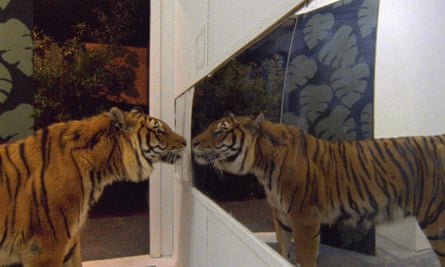
How, in the absence of any intelligible crosstalk, we have scientifically and imaginatively processed the planet’s other occupants is the concern of the Wellcome Collection’s exhibition Making Nature. The show’s curator, Honor Beddard (working with natural history consultant Jack Ashby), has brought together more than a hundred objects from literature, film, taxidermy and photography and organised them in four sections: Ordering (mostly about taxonomy and systematics from Linnaeus onwards), Displaying (about museums and collecting specimens), Observing (animals and their capture in zoos), and Making (about genetic manipulation, artificial selection and the unstoppable urge humans have to interfere with all levels of life).
Included here are world consciousness-altering enterprises, such as a first edition of Linnaeus’s whole Earth catalogue, the Systema Naturae, from 1735. But there are also telling jokes, such as the fake apeman that the maverick naturalist Charles Waterton assembled around 1825. Nearby are first-time groupings of specimens and artefacts: various remains of Count Raggi’s birds of paradise, with an intact body (a study skin) put alongside another with its feet and wings removed (looking like a flaming carrot, it perplexed early European curio-hunters who deduced the bird lived without touching the Earth); there are also the feathers of other birds fashioned around 1910 into a chic Parisian hat at the height of the plume boom, and other feathers from birds slaughtered on their home ground in the 19th century to make a headdress for a Torres Strait Islander. Here too are freshly incarnated dreams: a selection from the Pittsburgh Center for PostNatural History of various organisms that have been intentionally altered by humans, including dried and preserved E coli bacteria assembled in an acrylic block to spell out the words “Hello World”.
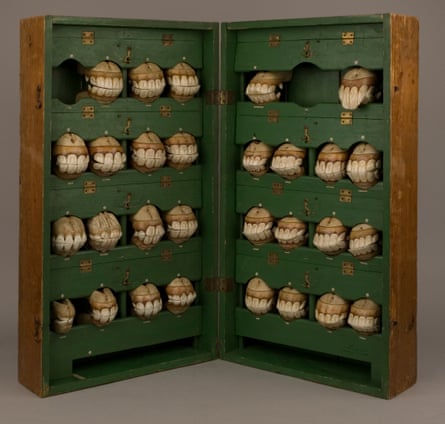
In the biblical account of creation, the separation of humans from other animals needed to be asserted. Adam was given an Eden project of his own: the job of naming every beast of the field, every fowl of the air: “Whatsoever Adam called every living creature, that was the name thereof.” “Naming the Animals”, a poem by Anthony Hecht, develops the story. Adam, new – understandably – to the game, is bewildered by his task. Shyly addressing a cow, he ventures to call it Fred.
Fred the cow and Adam’s efforts underline the paradoxical effect of naming nature. Organising the world with words, representations or manmade symbols brings wildlife closer to us. Differentiating every hummingbird in the Americas by a scientific and a common name raises each hectic blur of metallic colour into a humanly graspable object: the birds exist and now we know them to exist. To know that there are 340 species of hummingbirds, where once there were thought to be just 20, enlarges both our perception of biodiversity and our minds. But, as we discover quite how profuse life is, we also learn that each bundle of feathers most likely cares little for our taxonomical attentions. Naming gives us some purchase, but it also teaches that nothing in nature is for sale, that nothing beyond us – animal, vegetable or mineral – can be truly ours to have. We are having to learn to read over and over again as we discover more and more species; our naming, therefore, can only be a holding measure, the truth for now.
Look out of your window and think how every blackbird you might see is unaware it is a blackbird, not one tree cares whether it is an oak, an ash or a lime. And yet the blackbird lives as a blackbird, not as a blackcap; the ash is an ash and not an alder. We are right to tell the difference because the difference is telling. And this truth is imaginatively stimulating as well as intellectually invigorating. How much better to know that, instead of generic little brown things flying away from us, there are rock pipits and water pipits and tree pipits and meadow pipits. What a good day it was when Gilbert White’s repeated walks around his parish at Selborne in Hampshire in the 1770s prompted him to realise that there wasn’t just one but three kinds of leaf‑green warblers among the spring leaves: chiffchaffs, willow warblers and wood warblers.
Careful-looking lies behind this enlarging of life. Our species has been doing this for a long time: one of the wonders of cave paintings is the accuracy of their depictions. We may not know whether the lions or the horses represent a shopping list, or a field note, or a frieze of totemic animals to inspire shamanic dreaming, but we can immediately recognise precisely what the creatures are. They are named in ochre. Such diligent attention to the real and translations from it have remained a human trait ever since, throughout art and science history. One of my favourite stories about Charles Darwin has his son asking another boy, “Where does your father do his barnacles?”, assuming all dads were like his: organising geniuses intent on peering down microscopes and infatuated with life in all its forms.
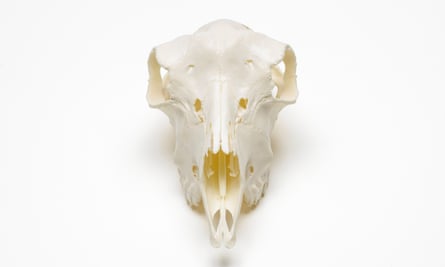
Not everyone would agree. Some think naming is a quasi-colonial action, a possessive anthropo-something grab after other species; some think that attempts to organise life and to understand it lose sight of its deeper truth and dilute its organic magic. The early 19th-century poet John Clare was an extraordinary field naturalist. His poems and prose writings comprise a remarkable 65 first bird records for his home county of Northamptonshire. Their names brightly mark all of his writing but he was hostile to the idea of scientific study: “I love,” he wrote, “to see the nightingale in its hazel retreat and the cuckoo hiding in its solitude of oaken foliage and not to examine their carcasses in glass cases.” Another poet, William Blake, was furious with Isaac Newton for, as he put it, unweaving the rainbow.
Let me try to convince the doubters. In the last few years the DNA of the large gulls of the northern hemisphere has been scrutinised. What I grew up thinking were herring gulls and lesser black-backed gulls have been closely studied. These two species had populations all around the planet that more or less merged with one another in a continuous grey and white flight of feathers. Geographical races or subspecies were known, usually defined by having separate breeding colonies every thousand kilometres or so. But “herring gull” was what I’d call any bird like it that I saw in the Mediterranean, or the Black Sea, or off the west coast of Ireland, as well as on my local reservoir, where I’d been birdwatching since I was a child. It was the same for the lesser black-backed gull. Then suddenly – for me at least – the two species became about 10. The herring gull survives but what were previously thought of as subspecies have been promoted to species. There are new birds to twitch: Caspian gulls and yellow-legged gulls moving north and west from their breeding grounds, and American herring gulls and Azorean gulls displaced around the Atlantic.
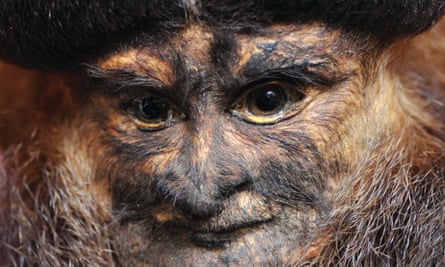
The birds themselves haven’t changed. They are as they were before the ornithological journals published papers splitting the species apart. My eyes are the same, too – straining through lenses and watering in cold winds and frosty dusks. But what is now known has changed everything: the gull world has got larger. There seems to be more life on the planet. That must be a good thing.
It is, of course, a question of terms. But, language being what our thinking lives by, these new terms have gone in deep. Taxonomy is an unfashionable discipline in the sciences today but should be valued as a key building block for understanding biological processes. All understanding of the species interactions on which life depends relies on knowing what a species is, even if the boundaries, as declared by us, are arbitrary, and nature doesn’t care where one species ends and another begins.
I said just now that it is my way of seeing that has changed, not the gulls themselves. But that isn’t quite true. Contemplating the findings and decisions of taxonomists and other organisers of the wild is a good way to keep fresh in our minds the fact that evolution is far from finished. The process did not come to an end when Darwin and those other bearded Victorians described it in the 19th century. Nothing is fixed in the world of the gulls of Britain, nor of any life on the planet. We are living our own evolution. It is as relentless as ever. And the extraordinary collection of texts and illustrations and artefacts and skins in Making Nature show how our single species has grown up – enamoured and provoked, troubled and fascinated – as we have tried to work out what on Earth is going on.
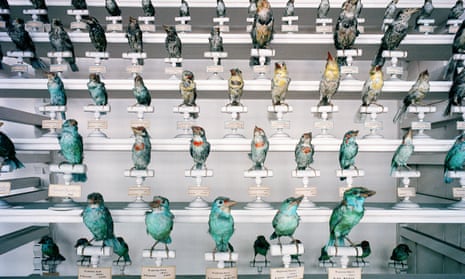
Comments (…)
Sign in or create your Guardian account to join the discussion